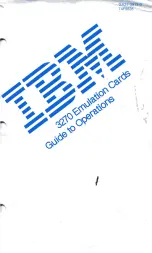
Section 18 I
2
C Bus Interface (IIC)
Rev. 1.00 Apr. 28, 2008 Page 568 of 994
REJ09B0452-0100
The master mode reception procedure and operations are described below.
1. Clear the TRS bit in ICCR to 0 to switch from transmit mode to receive mode.
Clear the ACKB bit in ICSR to 0 (acknowledge data setting).
Clear the IRIC flag to 0 to determine the end of reception.
Go to step [6] to halt reception operation if the first frame is the last receive data.
2. When ICDR is read (dummy data read), reception is started, the receive clock is output in
synchronization with the internal clock, and data is received. (Data from the SDA pin is
sequentially transferred to ICDRS in synchronization with the rise of the receive clock pulses.)
3. The master device drives SDA low to return the acknowledge data at the 9th receive clock
pulse. The receive data is transferred from ICDRS to ICDRR at the rise of the 9th clock pulse,
setting the ICDRF, IRIC, and IRTR flags to 1. If the IEIC bit has been set to 1, an interrupt
request is sent to the CPU.
The master device drives SCL low from the fall of the 9th receive clock pulse to the ICDR data
reading.
4. Clear the IRIC flag to determine the next interrupt.
Go to step [6] to halt reception operation if the next frame is the last receive data.
5. Read ICDR receive data. This clears the ICDRF flag to 0. The master device outputs the
receive clock continuously to receive the next data.
Data can be received continuously by repeating steps [3] to [5].
6. Set the ACKB bit to 1 so as to return the acknowledge data for the last reception.
7. Read ICDR receive data. This clears the ICDRF flag to 0. The master device outputs the
receive clock to receive data.
8. When one frame of data has been received, the ICDRF, IRIC, and IRTR flags are set to 1 at the
rise of the 9th receive clock pulse.
9. Clear the IRIC flag to 0.
10. Read ICDR receive data after setting the TRS bit. This clears the ICDRF flag to 0.
11. Clear the BBSY bit and SCP bit to 0 in ICCR. This changes SDA from low to high when SCL
is high, and generates the stop condition.
Summary of Contents for H8S/2100 Series
Page 2: ...Rev 1 00 Apr 28 2008 Page ii of xxvi...
Page 54: ...Section 1 Overview Rev 1 00 Apr 28 2008 Page 28 of 994 REJ09B0452 0100...
Page 92: ...Section 2 CPU Rev 1 00 Apr 28 2008 Page 66 of 994 REJ09B0452 0100...
Page 158: ...Section 5 Interrupt Controller Rev 1 00 Apr 28 2008 Page 132 of 994 REJ09B0452 0100...
Page 244: ...Section 8 8 Bit PWM Timer PWMU Rev 1 00 Apr 28 2008 Page 218 of 994 REJ09B0452 0100...
Page 330: ...Section 10 16 Bit Timer Pulse Unit TPU Rev 1 00 Apr 28 2008 Page 304 of 994 REJ09B0452 0100...
Page 416: ...Section 13 8 Bit Timer TMR Rev 1 00 Apr 28 2008 Page 390 of 994 REJ09B0452 0100...
Page 612: ...Section 18 I 2 C Bus Interface IIC Rev 1 00 Apr 28 2008 Page 586 of 994 REJ09B0452 0100...
Page 706: ...Section 20 LPC Interface LPC Rev 1 00 Apr 28 2008 Page 680 of 994 REJ09B0452 0100...
Page 752: ...Section 21 FSI Interface Rev 1 00 Apr 28 2008 Page 726 of 994 REJ09B0452 0100...
Page 774: ...Section 23 RAM Rev 1 00 Apr 28 2008 Page 748 of 994 REJ09B0452 0100...
Page 1008: ...Section 28 Electrical Characteristics Rev 1 00 Apr 28 2008 Page 982 of 994 REJ09B0452 0100...
Page 1020: ...Rev 1 00 Apr 28 2008 Page 994 of 994 REJ09B0452 0100...
Page 1023: ......
Page 1024: ...H8S 2117R Group Hardware Manual...
















































